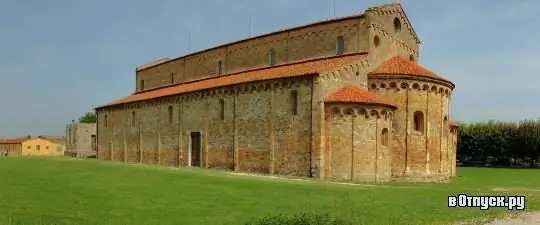
Description of the attraction
San Piero a Grado is a church in Pisa, located in the eponymous quarter on the site where the disappeared port of the Pisa Republic was once located. According to legend, it was here in 44 that Saint Peter descended to the land of Italy, arriving from Antioch.
Archaeological excavations have uncovered traces of an ancient early Christian temple at the site of a modern church, probably built on the foundations of an ancient Roman building. In the early Middle Ages, in the 8-9th century, that temple was replaced by a larger church. Construction of the current building of San Piero a Grado began in the 10th century. Then, in the late 11th - early 12th centuries, it was partially reconstructed. The church has a Latin cross in plan with a central nave and side chapels. Unusually, there are apses, which were probably built after the collapse of the façade due to the constant floods on the Arno River. The entrance to the church is located on the north side.
The exterior of San Piero a Grado is made of stone brought from different regions of Italy. The façade is adorned with pilasters and arches, over which are marvelous ceramic bowls, made in the workshops of Mallorca and Sicily, with distinct Islamic features. The bowls are decorated with geometric and metaphorical designs. In fairness, it should be said that this is only a copy, and the original bowls are kept today in the National Museum of St. Matthew in Pisa. The bell tower of the 12th century was destroyed during the Second World War - only the foundation remained from it.
The majestic interior of the modillon church is divided by antique columns with classical capitals. In the western part, you can see a Gothic ciborium from the early 15th century, which stands on the spot where, according to legend, Saint Peter prayed for the first time. The walls of the nave are decorated with a huge cycle of frescoes recently restored. They were executed in the 14th century by the Lucca-based artist Deodato Orlandi, commissioned by the Caetani family. Below are the portraits of the popes, from St. Peter to John XVIII (1303), in the center are thirty panels depicting scenes from the lives of Saints Peter, Paul, Constantine and Sylvester, and above are the Walls of the City of Heaven. A 17th century wooden crucifix hangs over the main altar.






